Whoa! What a great start to my adventure in the Sonoran Desert. I chased down a
roadrunner. These incredible creatures are designed for desert life.

These lightning-fast birds can fly, but not as fast as they can run. They're terrific
sprinters that eat insects, lizards, and even snakes!
The desert can get pretty hot; by mid-morning it was a toasty 80 degrees. Roadrunners get
their moisture through their food. They rarely get water.
I picked up a little friend, a baby javelina. Since the baby was on its own, I had to
assume the herd had passed through and left it behind. I decided to see if the herd would
come back from some cover, but the baby wanted to come along. I had to tell it to stay!
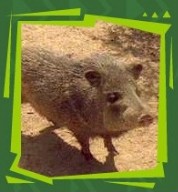
Javelinas depend on social family groups for survival. They have excellent defense skills
-- hence my hanging out in cover -- and will stop at nothing to defend the herd.
Fortunately, the little javelina caught up to the rest of the herd.
What do you find most in the desert? Cacti. You know you're in the Sonoran Desert when you
see saguaro cacti, which grow up to 80 feet over 100 years. Around these cacti I found
a velvet ant. Though they are called "ants," these tiny creatures are wasps. They even
have quarter-inch-long stingers. You never know what you'll find crawling around the
desert, so be careful where you step and sit!
As I moved on from the happy reunion, the desert was getting hotter! I found a Harris
hawk in some shade. These creatures are totally amazing parents. They use their first
set of offspring to rear, or "baby-sit," their second brood, while they go out hunting
for food.
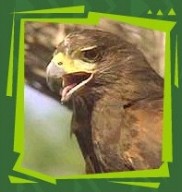
Harris hawks also act like wolves. A single Harris hawk can hunt on its own, but they
also take prey in pack like fashion, sharing the prey back at the nest.
A loose rock was hiding a scorpion. You never want to pick up one of these creatures.
They use their two front pinchers to take prey and rip it apart. Scorpions have stingers
with enough poison to kill a lizard.
The Sonoran Desert only receives 10 inches of rainfall each year. This means creatures
have to find other means of taking in moisture, like the roadrunner does.
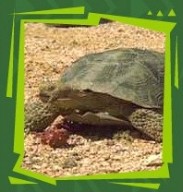
Desert turtles, javelinas, and other desert creatures like to eat prickly pears from
cacti. Prickly pears are a great source of nutrition and moisture, and animals spread
the seeds when they eat them.
The desert turtle doesn't drink from a water source at all. It stores it's moisture in
its bladder. Quite unusual for an animal known to be aquatic!
We came across so many interesting animals in this adventure it was hard to choose which
ones to cover. Desert turtles have elephant feet they use for digging dens where they can
cool off during the day.
The one thing there's no shortage of in the desert is snakes! The hot sun had gone down,
the best time for exploration in the desert.
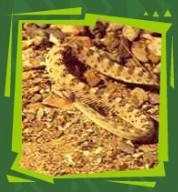
Right away I knew I had spotted a sidewinder snake. These snakes are named for the way
they move their bodies. A sidewinder throws its body forward, and the rest of the body
follows. Above a sidewinder's eyes you can see two horns. These horns serve as
sunshields and block sand blowing around the desert.
Sidewinders are nocturnal, which means they are active at night. They're venomous -- so
if you see one, head the other way!
The next day I came across a tropical cousin of the raccoon, the cote. Cotes can be found
from Arizona down to the tip of Argentina.
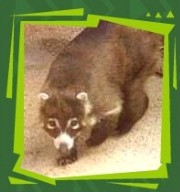
The cote has a longer nose than the raccoon; it uses its nose to sniff out its habitat.
The cote can live in trees and is equipped with a prehensile tail that acts as an extra
limb to hold on to things.
Cotes are omnivores which means they basically eat anything from fruits to lizards and
snakes.
Finally I was able to track down our feature creature, the gila monster. It was hiding
in a pack of cacti.
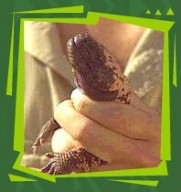
The gila monster is an amazingly perfect animal. It has a thick muscular tail for storing
water and energy! As the name implies, the gila monster is indeed poisonous. The poison
is found in the lower part of it's jaw.
Other animals get a warning, before they even go near the gila monster, that its poisonous
and to stay away. How? The combination of its colors, red and black, is a warning sign
of poison in nature.
Unfortunately, gila monsters are disappearing, due to being run over and losing their
habitat. But the biggest threat to these amazing creatures is from people who want them
for private collections! If you see one of these creatures, please observe it from
afar. Thanks!
What a great find. Take care in your exploring -- don't get too close to an animal you
don't know. And stay curious!
Until my next adventure,
Jeff
Back to the Journal Page